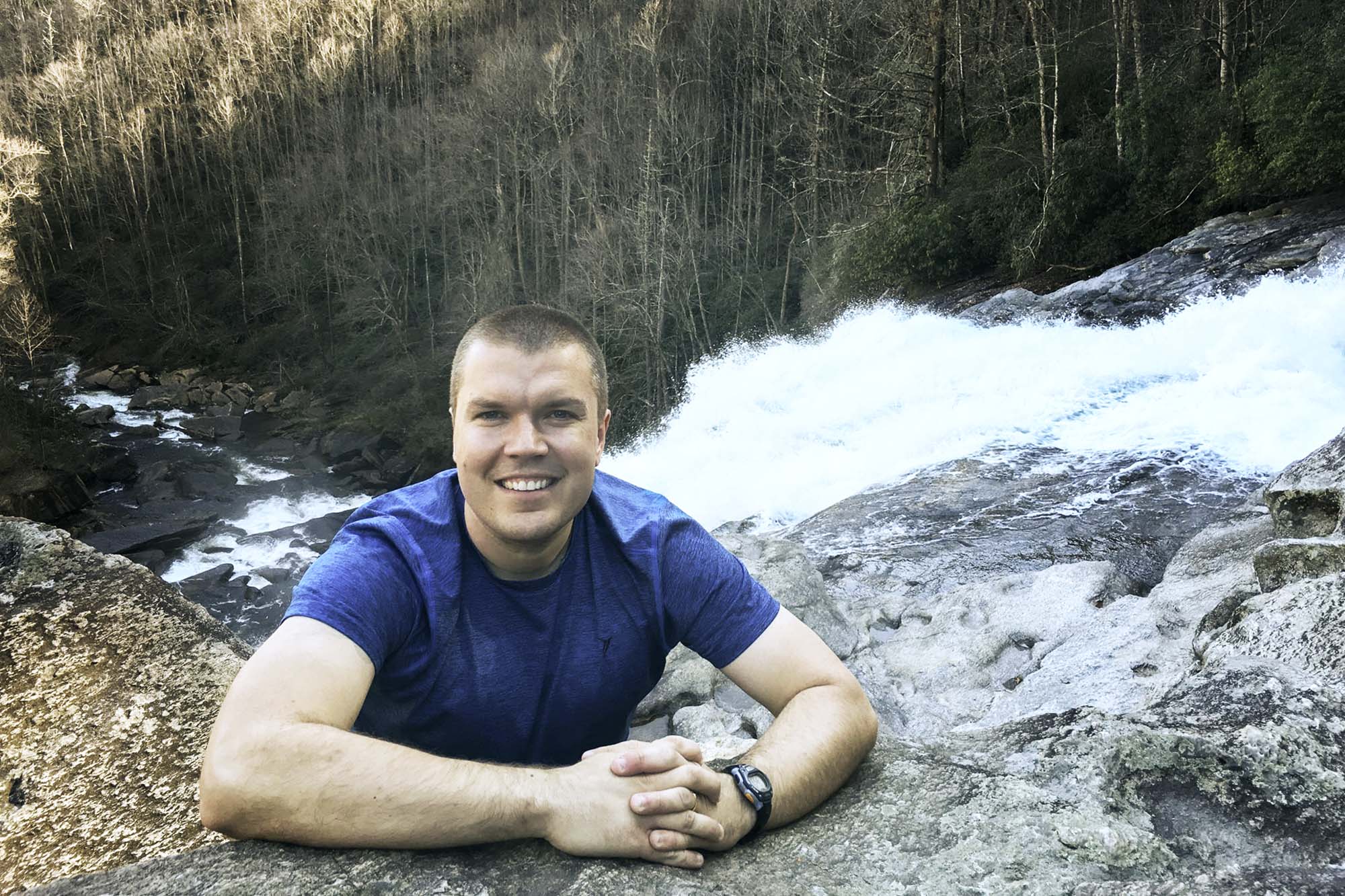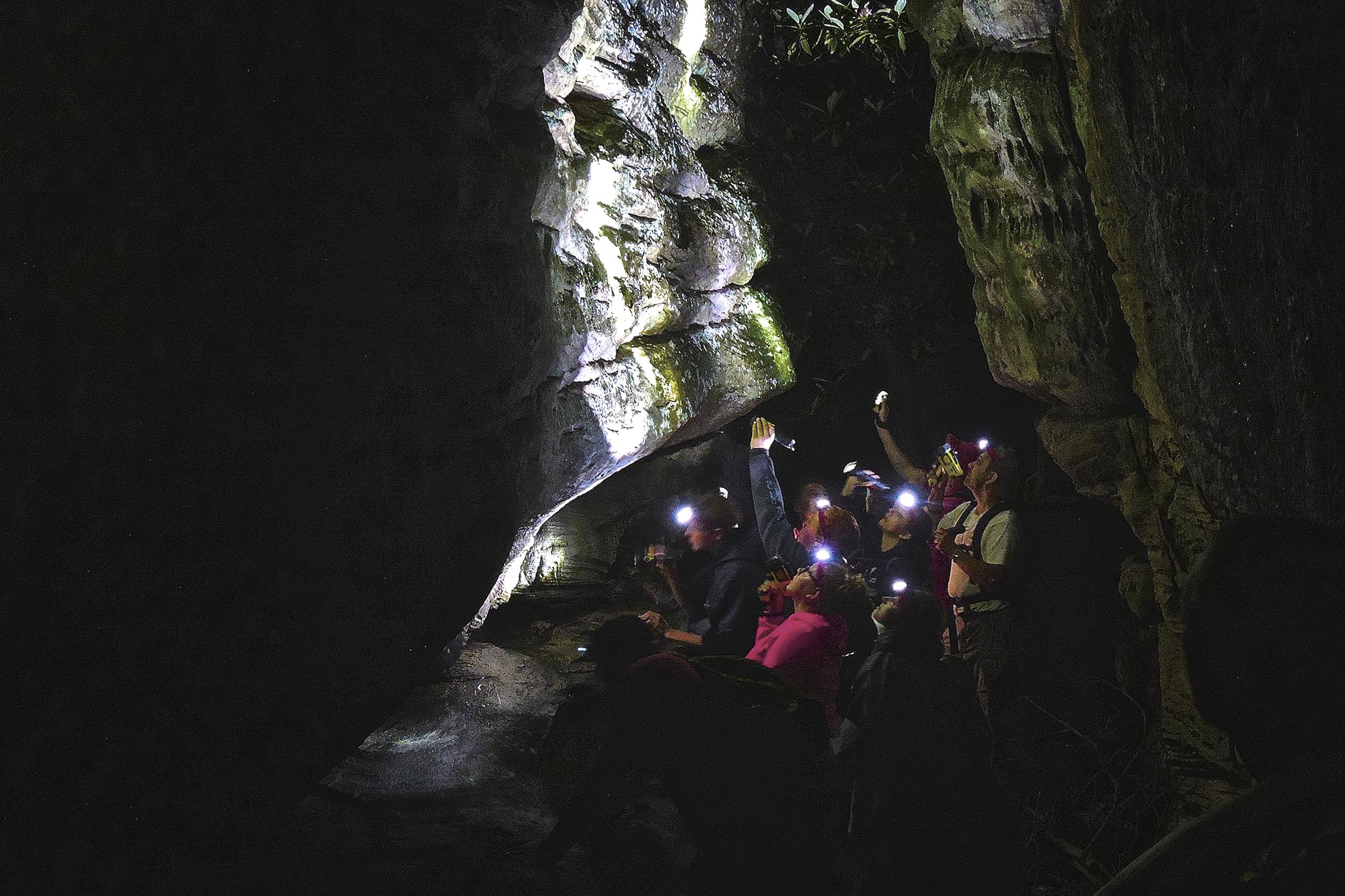Southwest Virginia is salamander central. Some 40 species in the Plethodontid family call the southern Appalachians home, making these ancient mountains a global hotspot for the lungless amphibians. These cryptic – or highly secretive – creatures play an important role in the local ecology, and in some areas, salamanders are the most abundant vertebrates in the forest.
For a self-professed salamander fan like Wally Smith, associate professor of biology at the University of Virginia’s College at Wise, this level of salamander biodiversity is a researcher’s dream come true. Smith’s primary focus is the green salamander Aneides aeneus, a species noted for its bright emerald green coloration and unusual habitat preferences – sheltering on cliff faces and in the summer, high in the tree canopy.
“I think what draws me to that species is that it’s very weird among Appalachian salamanders,” said Smith, who won the Rising Star award from the State Council of Higher Education for Virginia in 2016, given to faculty members who show extraordinary promise early in their teaching careers.

Associate professor of biology Wally Smith said opportunities for field research and the chance to work closely with undergraduate students drew him to UVA Wise.
“It is a rock outcrop specialist, so it’s living in vertical cracks and crevices in cliffs. When you’re hunting salamanders, you’re flipping over logs or rocks on the forest floor or in a stream, and with this thing, you’re literally climbing up mountains and getting to a cliff where you’re taking a headlamp or flashlight and staring into these tiny crevices and seeing these little eyes staring back out. The different nature of the species is part of the allure. It’s a very different way to survey for amphibians in this part of the world.”
That’s the thing about green salamanders: They’re hard to find. Consequently, we know little about their life history or distribution. Smith’s research, using a combination of citizen science initiatives and traditional field surveys by UVA Wise students, has led to the discovery of more than 90 previously unknown populations, suggesting the possibility that distribution of A. aeneus in Virginia has been greatly underestimated. As a result of Smith’s research, the city of Norton, near the UVA Wise campus, passed a resolution to designate the city’s Flag Rock Recreation Area a green salamander sanctuary in order to protect the animals’ habitat.

“We really do not know much about the animals, whether it’s the natural history or conservation status,” Smith said. “That’s where all of our research has come from, trying to fill some gaps in knowledge that can help decision-makers, policymakers and biologists with state and federal agencies to better manage their land and their resources. I think, for me, the most surprising thing is that the species, locally at least, is not nearly as rare as we had previously thought. That’s very promising from a conservation perspective.”
Smith gravitated toward UVA Wise in part because of its location in the heart of salamander country and in part because of the chance to work with undergraduates, many of whom are first-generation college students.
“That’s really what drew me here,” he said. “I knew I wanted to go to a teaching-oriented environment. We have very enthusiastic students and an administration supportive of research. From the scientific perspective, having students we can dedicate to our project has been great. Our students almost act more like grad students.”
Smith’s next project involves working with the U.S. Forest Service. “We’re going to be doing some species surveys on High Knob and in the Jefferson National Forest looking for green salamanders in an area where the Forest Service may be doing some future management activities,” he said. “It’s a great experience for our students. One of the things I love about working at UVA Wise is that we have one-on-one attention with students. I can take students into the field, and they’re not just learning about research techniques – they’re actively engaging in a project with a federal agency. They’re going to do real on-the-ground science that’s going to have a real impact. I’m really excited about that.”
Media Contact
Article Information
November 30, 2020
/content/wallys-world-uva-wise-professor-tracks-appalachias-salamanders

